Ever since James Cameron brought Avatar to the movie screens in 2009, gamers have been hankering for an open-world game set in the mesmerising and lush world of Pandora with its unique inhabitants, the blue-skinned Na’vi people, and its fantastic flora and fauna.
With the release of Avatar: Frontiers of Pandora (AFOP), our wish has been granted. But what kind of experience does it offer a Na’vi wannabe?
Being Na’vi
In the game, you play a member of the Na’vi from the lost tribe of Sarentu, who are known for their skill in song and storytelling. Your character was “adopted” (or abducted) by humans of the Resources Development Administration (RDA) as a child in their facility on Pandora.
At the start of the game, you awaken after a lengthy 15-year slumber in an RDA facility, and venture to the outside world, learning about their past and their forgotten Sarentu heritage.

With the RDA expanding their grip, greedily mining resources from the ground and polluting the land around their facilities, the world of Pandora is facing an environmental crisis.
Your character has to work with the various Na’vi tribes to repel the RDA and their destructive ways to preserve the Na’vi way of life and restore Pandora.
Siding the Na’vis are humans who have broken away from the RDA and are now resistance fighters, and are a great source of human technology and gear.
Just like in the films, the world of Pandora is breathtakingly beautiful, with lush forests, alien flora and fauna and gravity-defying landforms. Exploring the world of Pandora in the game makes for an immersive and enchanting experience.
Saving Pandora
AFOP is a first-person shooter set in an open world, with enemy outposts to clear, Na’vi tribes to befriend and build alliances with, as well as hunting and gathering materials for gear crafting and upgrading.
As a Na’vi familiar with human contraptions and starting out on Na’vi culture, your main weapons include assault rifles, shotguns and grenades, as well as Na’vi bows, spears and staff slings for lobbing explosives.
Being a Na’vi, your character can also activate “Na’vi sense”, which allows them to detect enemies behind obstacles, acquire information on flora and fauna and identify objectives for active missions.
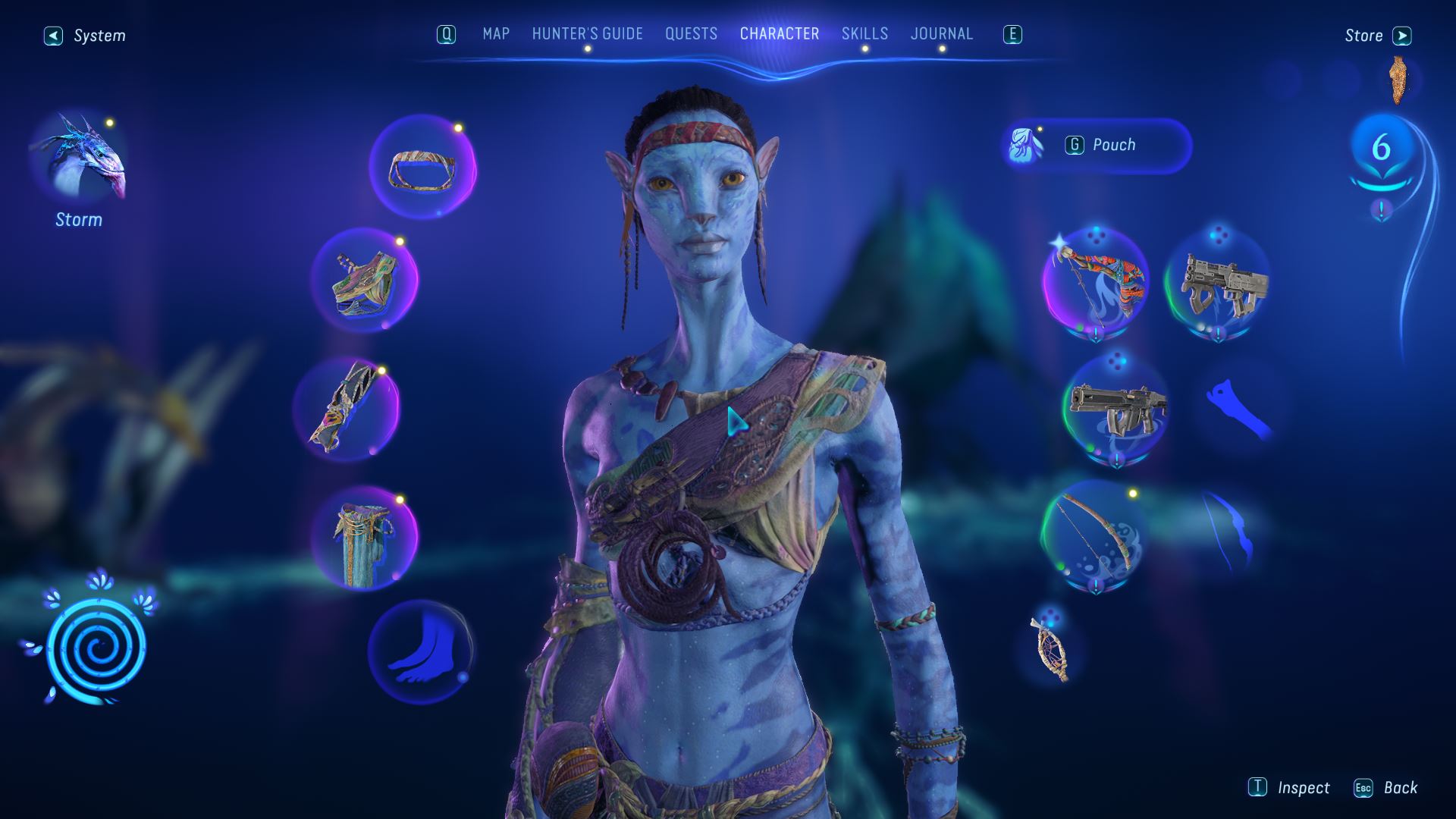
Your character can be customised in terms of gender and appearance, although you won’t see much of yourself since the game is played fully from a first-person perspective.
AFOP’s gameplay and themes faintly echoes Horizon Zero Dawn and Forbidden West games with its emphasis on tribal alliances and cultural identity, sustainability and the love of nature, as well as hunting creatures for parts and crafting gear.
A big part of the game is defeating the environmentally-unfriendly RDA forces and taking over their facilities for nature to thrive again.
With advanced military technology, RDA enemies include troops wearing Amplified Mobility Platform (AMP) mecha-suits that can take a lot of hits, airborne Scorpion gunships and troops armed with rocket launchers, which can be pretty challenging to take on early in the game.
Even the beautiful natural environments in Pandora harbour hostile creatures, like Viperwolves that are quick and agile, Thanators that temporarily inhibit the use of Na’vi senses and are deadly up close, and Scarab Crawlers that are heavily armoured.
There are also plenty of flora that can hurt your character with poisonous fumes, electricity and explosions. Adding to the hazards are aggressive feral animals that have been experimented by RDA and released into the wild.
AFOP also has a puzzle-solving aspect in the form of a handheld Systems Interrogation Device (SID) that can be used to hack locks, override consoles and even repair circuits.
The puzzles are quite clever and varied, and a successful hack requires you to trace a route on a circuit beset with obstacles, similar to solving a maze.
Scattered across the maps are abandoned research labs that can be repaired and activated by using the SID and will serve as a fast travel point, once activated.
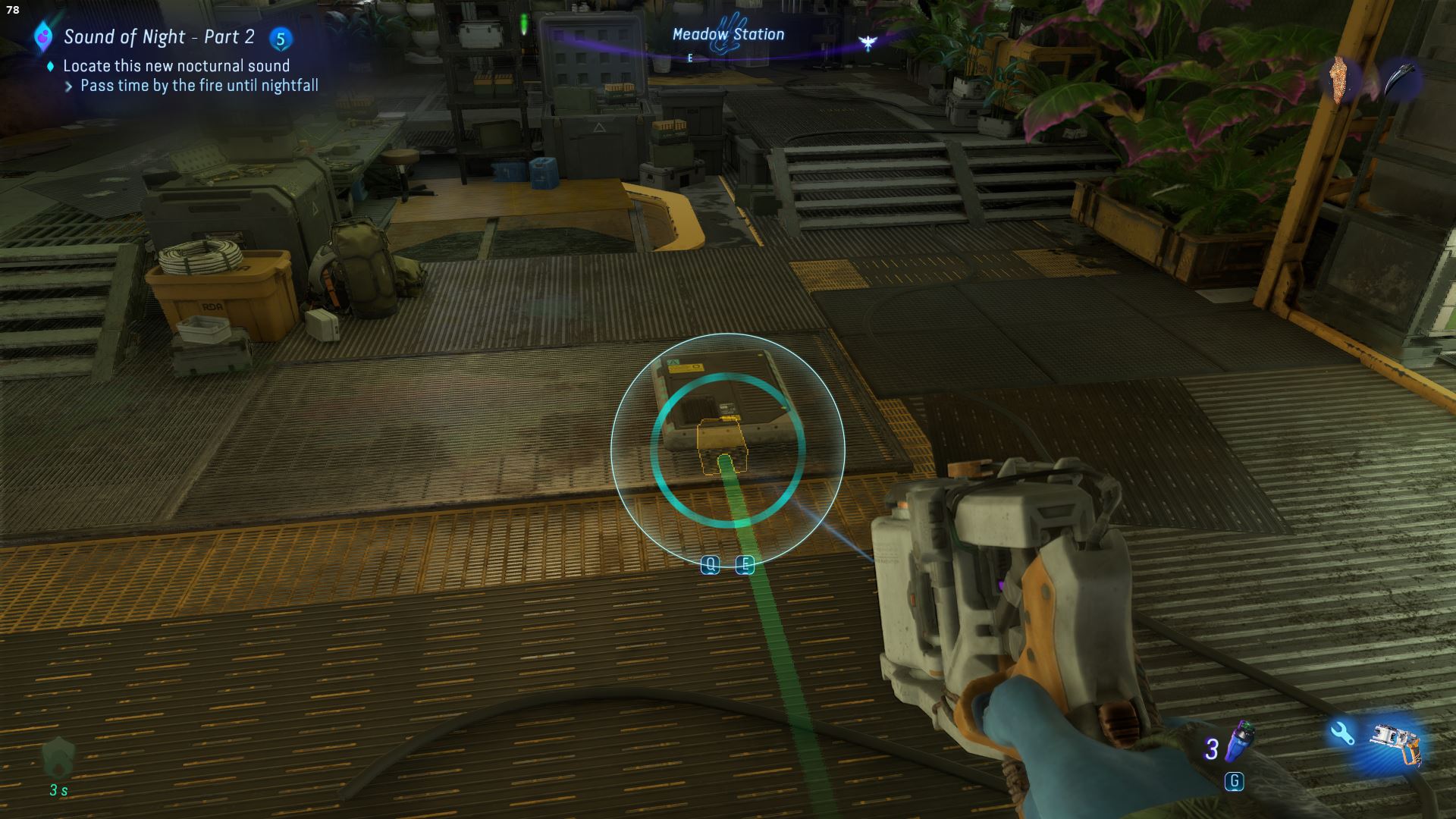
The most enjoyable aspect of AFOP is exploring Pandora. Side quests are designed to make you explore the map, but even while you are randomly exploring without being tied to a quest, there is plenty to discover on the map.
You can find Bellsprigs to permanently increase your base health, Tarsyu saplings to gain Skill points, creatures to hunt and plants to gather crafting items at specific biomes, and also Tarsyu flowers where you can connect to Eywa (All Mother) to gain useful Ancestor Skills.
Exploration gets a lot easier when riding an ikran (Mountain Banshees that can be tamed as a flying steed) and flying across the skies of Pandora with it, while taking in the stunning scenery. You can even name your ikran with preset names, select its colour scheme, and even feed and pet it.
Crafting, cooking and contemplating
In terms of equipment, your character can opt for RDA combat garb or traditional Na’vi gear. For RDA gear, you can trade with the Resistance using Spare Parts looted from RDA facilities, while Na’vi gear can be crafted when you have obtained the designs that vary across the tribes.
Na’vi gear can be crafted by animal or plant parts, which means one needs to go hunting and gathering in order to upgrade gear and weapons.
Hunting and gathering in AFOP isn’t as straightforward as simply just pressing a button — how you kill your prey and how you gather fruits, roots and shoots also matter.
For instance, if you kill an animal with an assault rifle, it will be ruined and you cannot harvest fur, teeth or meat from it. And if you yank a fruit or a patch of moss too roughly, it will lose its “pristine” condition.
Being Na’vi, your character will also perform a “Marie Kondo” ritual and thank the slain animals for providing gifts before looting them. That really sparks joy!
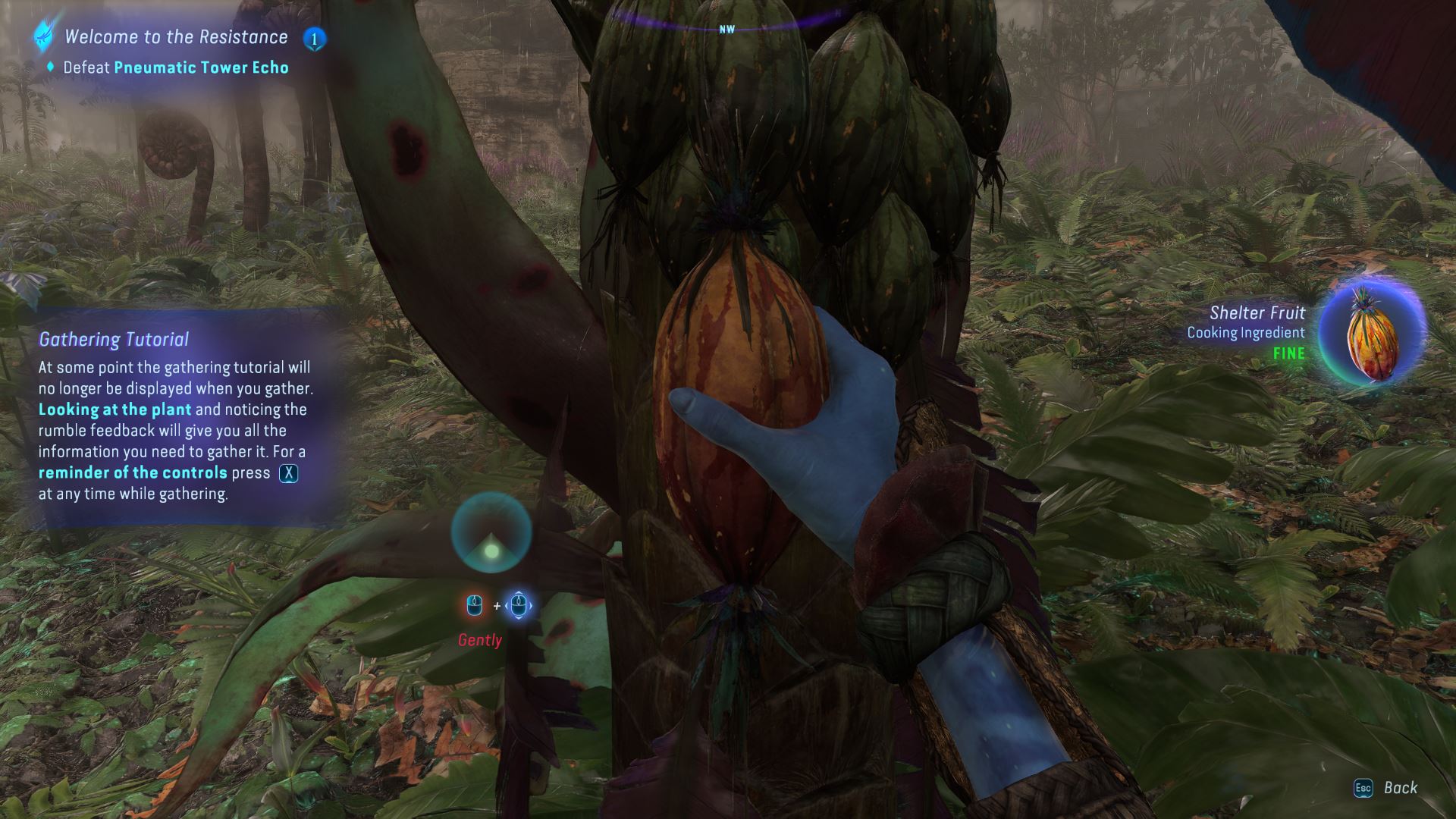
Apart from crafting gear, you can also harvest plants and animals for food and medicine. Cooking will produce food that provides your character with certain buffs when consumed, which can be a life-saver when you are marching into an RDA facility for a solo takedown, or exploring an area filled with toxic mushrooms.
I enjoyed AFOP’s well-varied side quests that felt meaningful, where your character helps certain characters or learns certain skills, and not just performing meaningless fetch quests and run errands.
Yes, they do send you off to hunt certain ingredients, such as creating a new dish but you get to learn a new recipe in the process. Or you become the confidante of certain characters and continue to take part in their endeavours later in the game, which feels like you are developing some kind of ongoing friendship with them.
Performing side quests can earn you Clan favours, which is a form of goodwill currency with certain clans that let you trade with them for gear or consumables. These quests include helping out members of the Na’vi tribe, taking down RDA outposts in the vicinity, and contributing items to the community.
But the game isn’t all about running and gunning, or hunting and collecting. There are optional activities which are deliberately slow and contemplative, such as Painting a Memory which forces you to be ambidextrous in tracing out a scenery, or finding the right perspective to view a Sarentu totem.
And there is always the option of just wandering around and discovering new places — the game offers plenty to discover and rewards the efforts put into exploration.
Meet the Na’vi
The various Na’vi tribes are clearly distinguished with their own expertise, colours and motifs, as well as musical accompaniment, which makes it interesting to interact with them. AFOP’s Non-playable Characters (NPCs) are a well-varied and inclusive bunch, and tend to be pretty chatty.
As you eavesdrop on conversations by the NPCs, you gain insights into new quests, locations and special places of interest to visit. As a throwback to the films, there is also mention of the heroic deeds of Jake Sully, the protagonist of the Avatar movies.
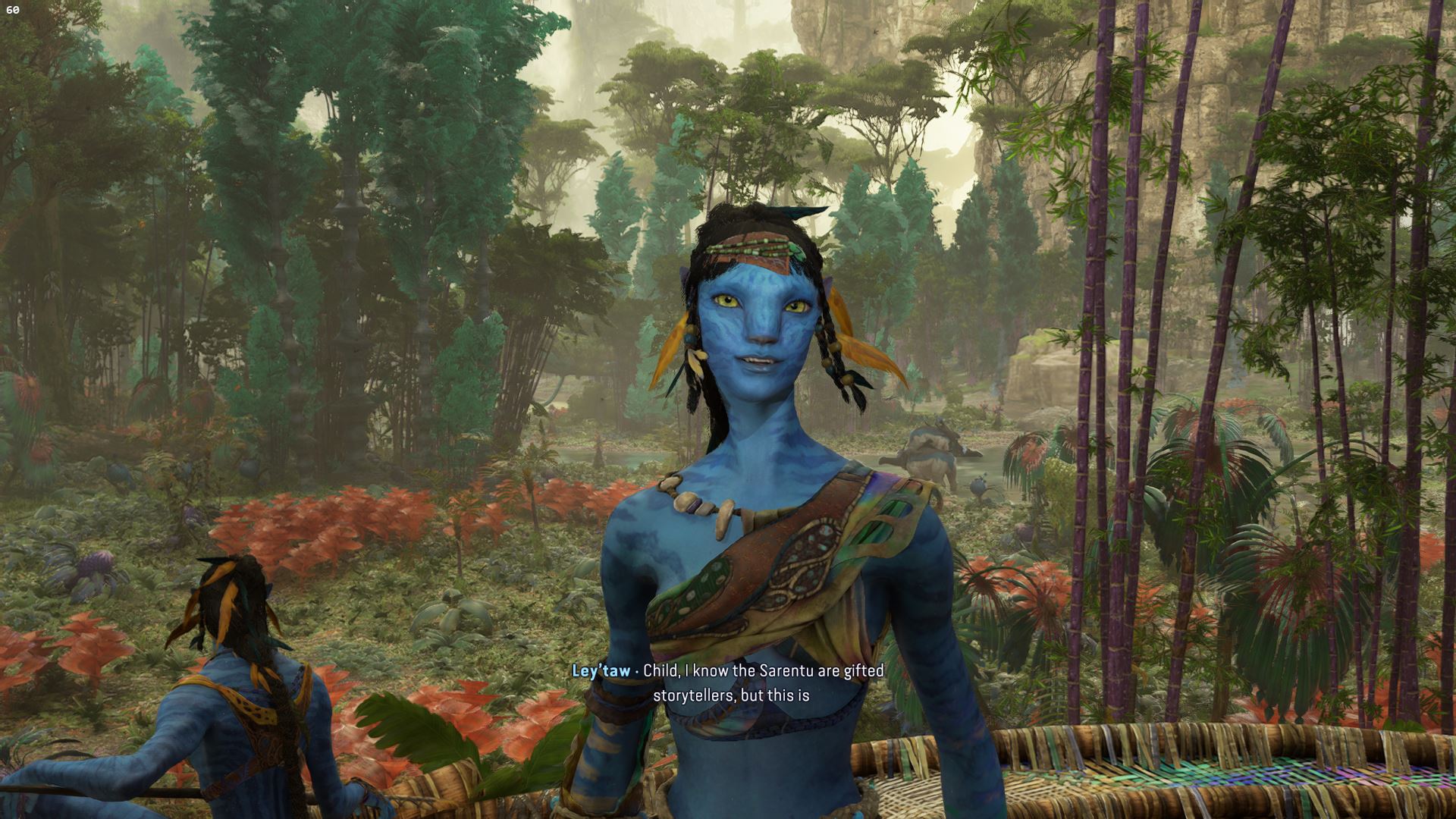
However, some dialogues can get lengthy with long-winded characters who frequently belabour the point at length, so much so I was tempted to skip ahead at times. Since there isn’t any dialogue options to choose from when your character interacts with others, your character can feel rather one-dimensional, insipid and too eager to please.
Conversely, humans from the RDA are portrayed as uncaring and cruel to nature and are going to ruin Pandora as they did Earth with pollution, animal cruelty and unsustainable practices that are detrimental to the environment.
As you complete quests, you gain skill points. AFOP features a varied skill tree for you to acquire skills across five different disciplines, including Warrior, Hunter and Maker. There is also an additional skill tree of ancestor skills that can be acquired by linking up with Eywa by finding Tarsyu flowers across Pandora.
One gripe I have is that the climbing mechanics are awful with little clarity on what surfaces can be climbed. I pretty much keep jumping against the cliff face hoping my character can gain some purchase on the wall and ascend, which works sometimes.
It is pretty much a hit and miss, and one is not always rewarded after a hard climb. With sheer cliffs and high mountains, falling to death is a pretty common occurrence. So save your exploration efforts until you can get airborne after taming an ikran!
Beauty as far as the eye can see
AFOP is a beautiful game, but that is unsurprising since it is based on the visually amazing Avatar movies. The world of Pandora is teeming with life — brilliant green foliage moving in the wind, the luminescence of life at night and captivating effects of nature like rain, fog and lightning makes for a truly immersive environment that feels so alive.
This contrasts strongly with the disgusting brown areas polluted by the RDA facilities with their cold metal and concrete, and trash littered all over the place.
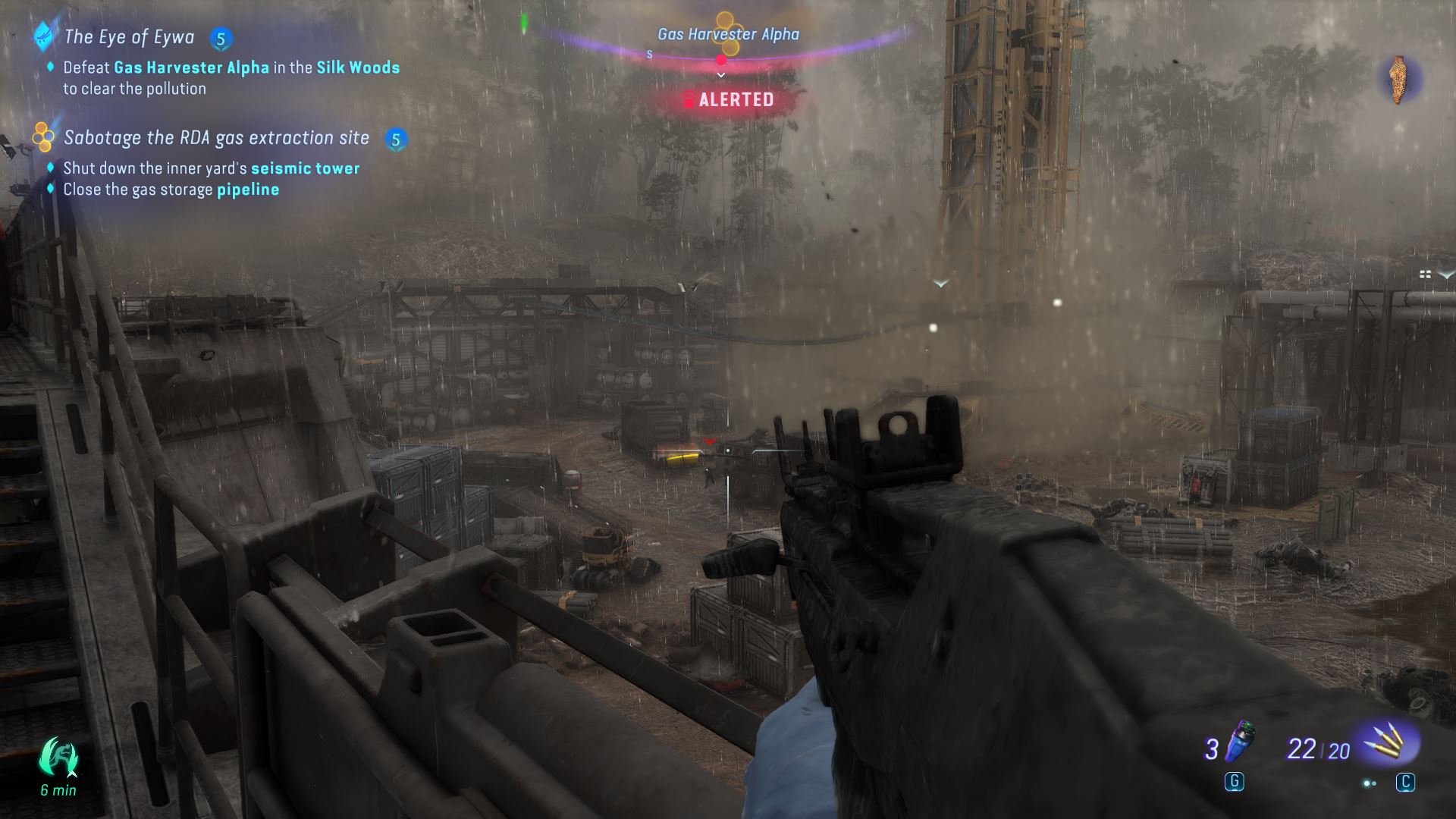
AFOP’s music is hauntingly beautiful, and will not feel out of place in an Avatar movie’s cinematic score. With charming vocals and a soaring soundtrack backed by an orchestra, it evokes strong emotions at key moments of the game.
You can’t beat the experience of riding on an ikran and soaring above the floating islands bathed in moonlight while hearing the ethereal voices of a folk choir and orchestral accompaniment!
But there is a price to pay for such beauty in AFOP. The game needs to be installed on an solid state drive (SSD) order to run smoothly, so ensure that you have about 80GB of SSD space for it.
Initially, I tried running AFOP on a mechanical hard disk but the performance was so poor that it was unplayable, so save yourself some time and just install it on an SSD.
Even with that, I did encounter a few occasions when the game hung and I was forced to reboot my PC, losing some progress since the game only has autosave and no manual save.
Apart from this, the game runs reasonably well, clocking around 50 to 60 frames per second on my not-so-new PC with an Nvidia GeForce RTX 3070 graphics card and 32GB of DDR4 RAM.
TL;DR
AFOP is a thoroughly enjoyable gem not to be missed if you love the Avatar movies. It has you exploring open-world games with beautiful natural scenery, and befriending different Na’vi tribes living in harmony with their world.
With meaningful quests to perform and interesting characters to meet, as well as a good balance of epic battles and contemplative moments and peaceful activities like hunting, gathering, crafting and cooking, the game has a lot to offer. It is also a treat for the senses with breathtaking graphics and a haunting score.
However, the staid dialogue and insipid protagonist can be improved since there is so much excellent material from the movies. Another issue is the game’s awful climbing mechanics, but this is less of a problem after the flying ikrans are unlocked.
AFOP is available for the PlayStation 5 at S$97.90, Xbox Series X|S at S$98.25, and PC from Ubisoft Store at S$94.90. It is a rather pricey game but the superb production value, satisfaction of the senses, as well as varied activities and exploration in a beautiful world makes it all worthwhile.






